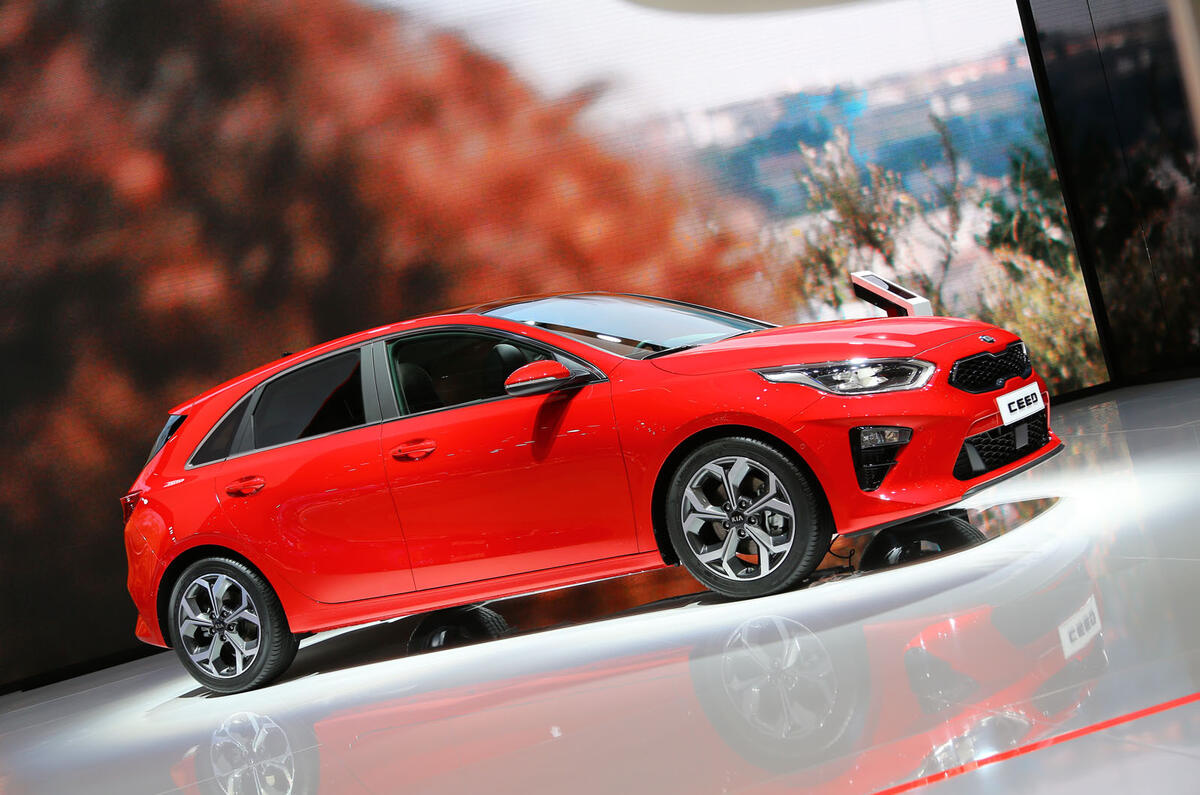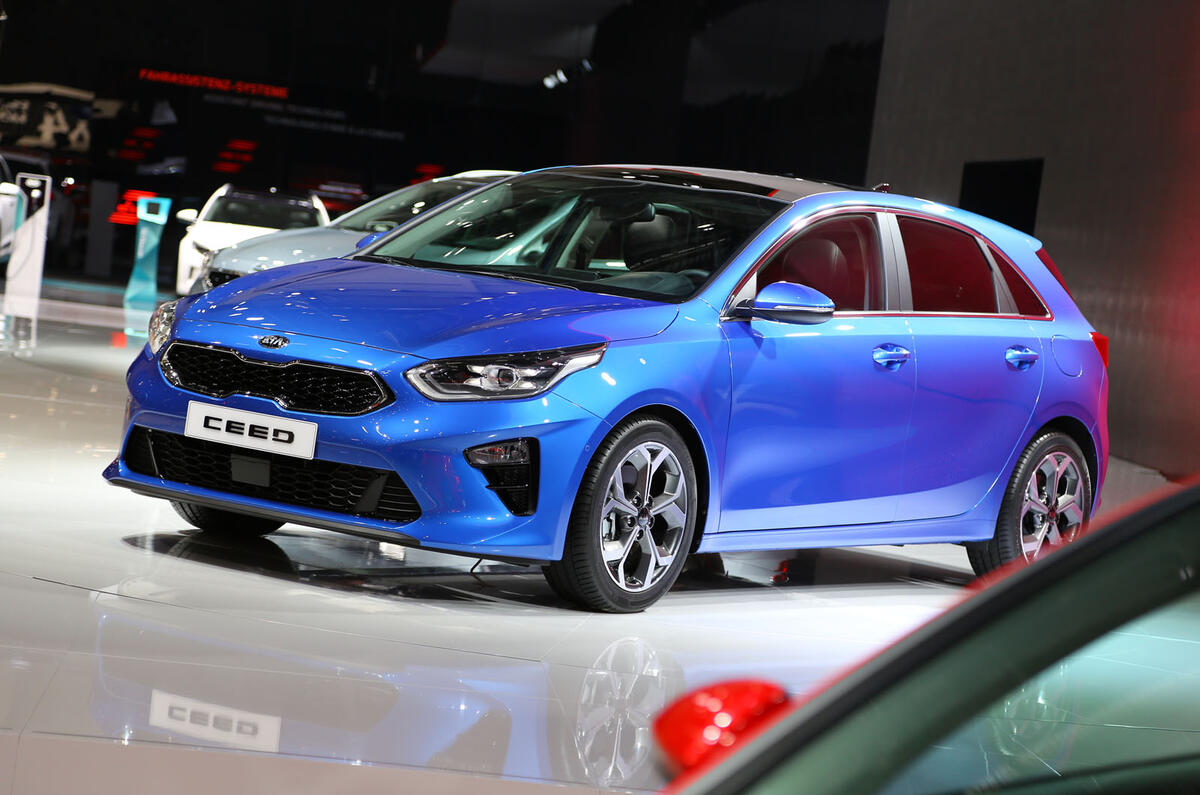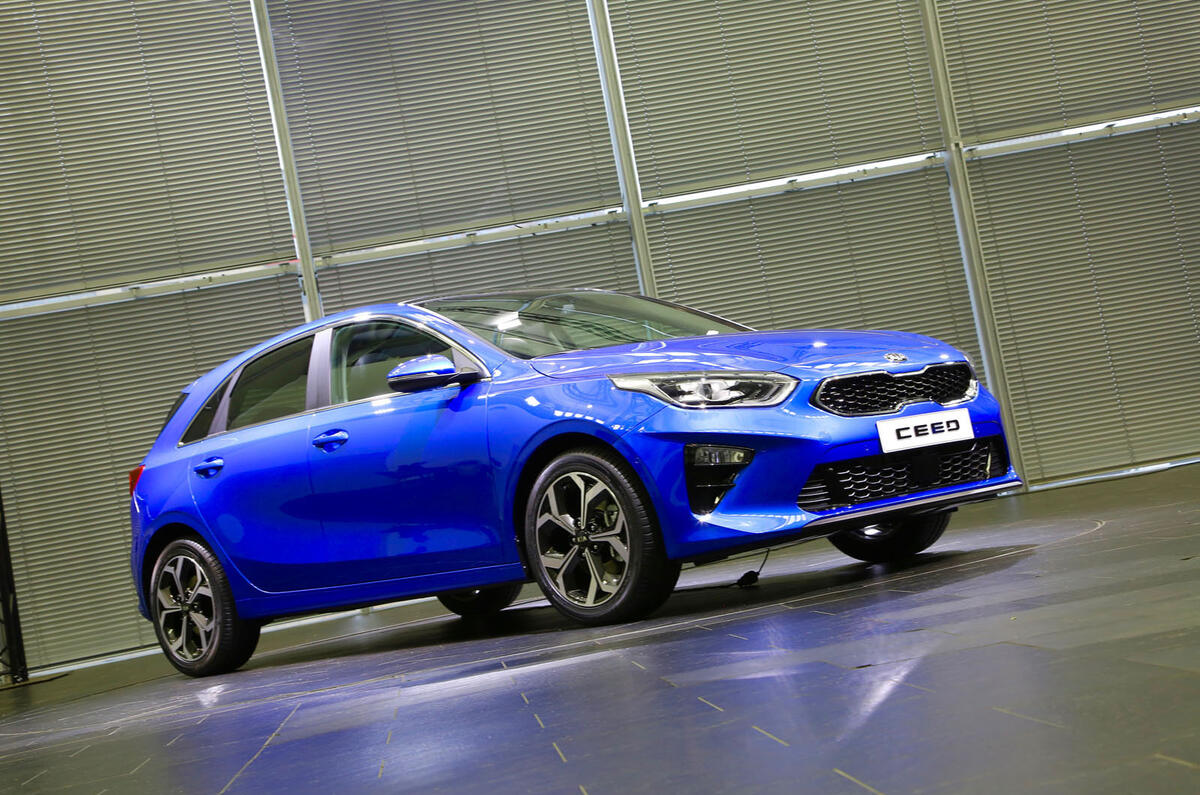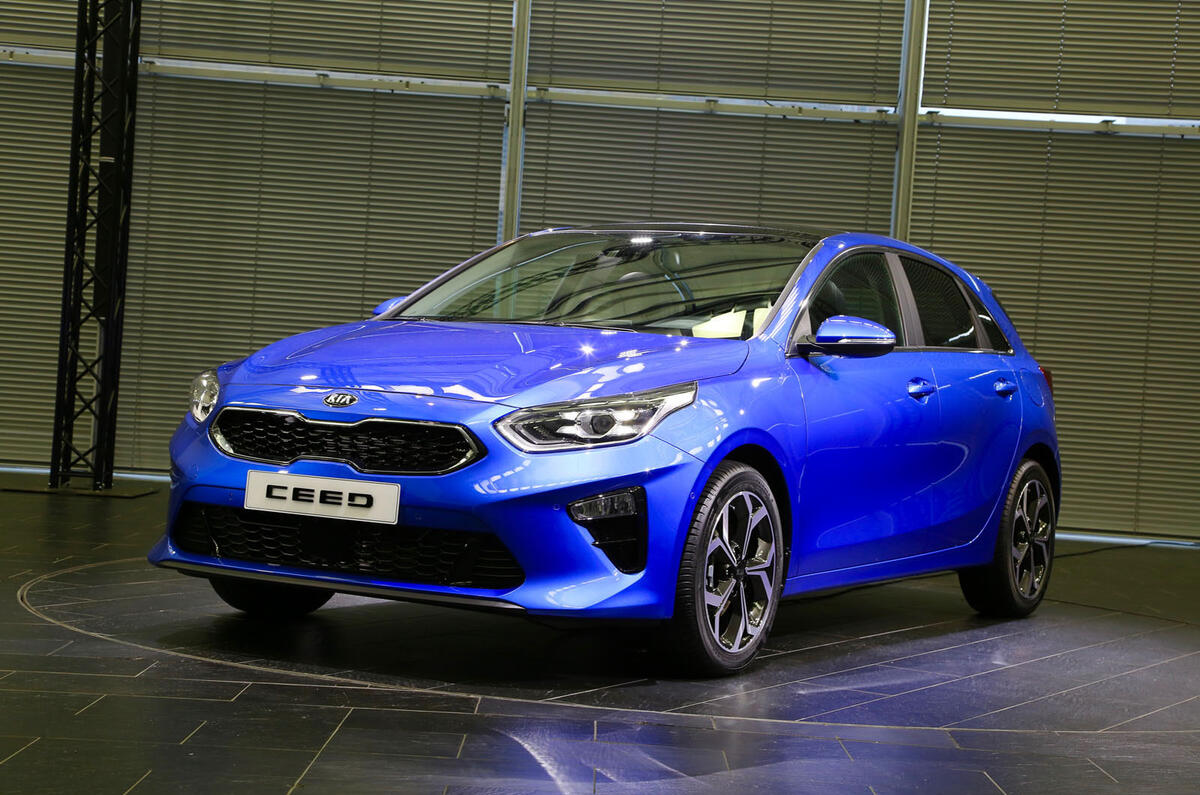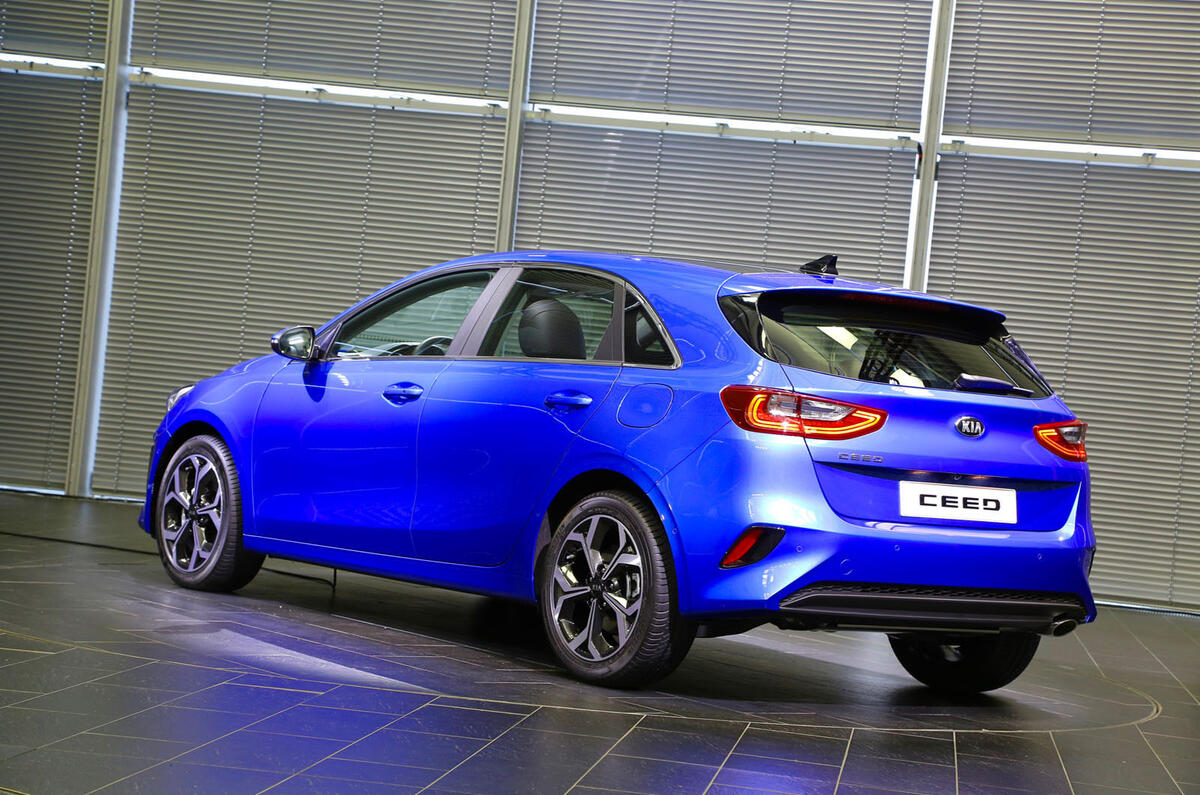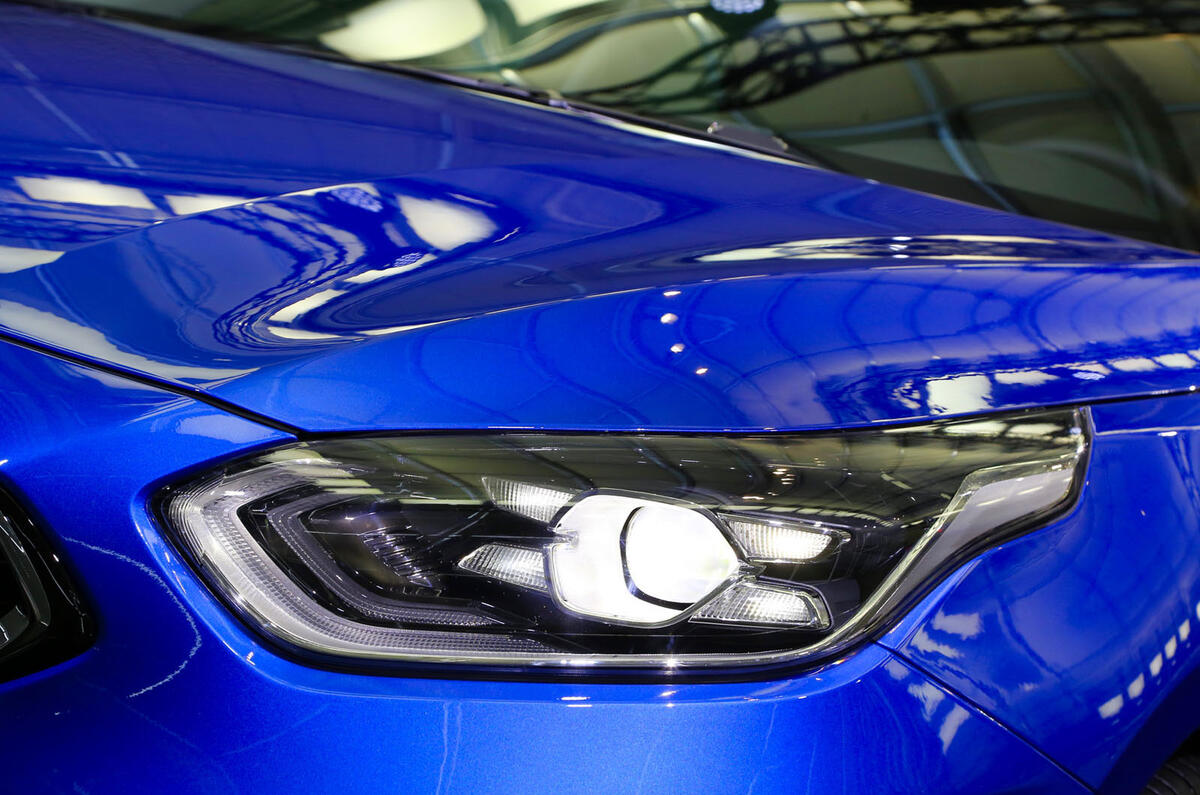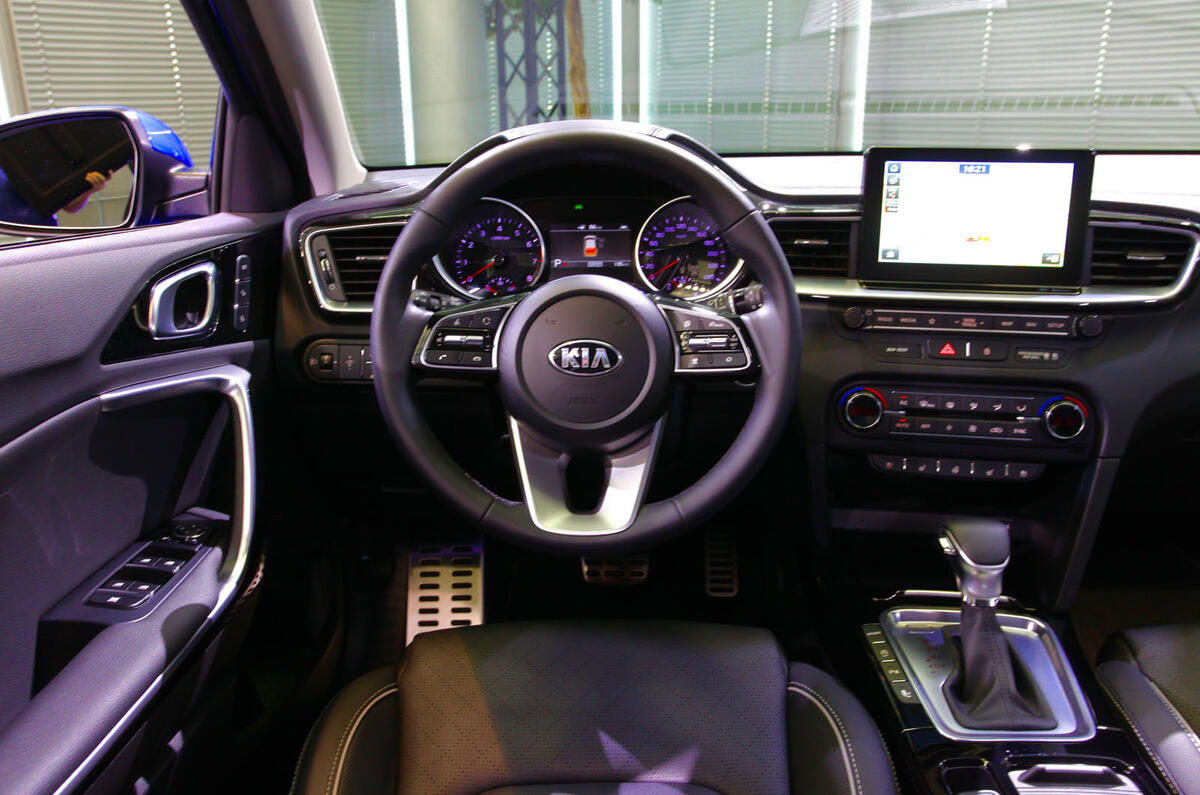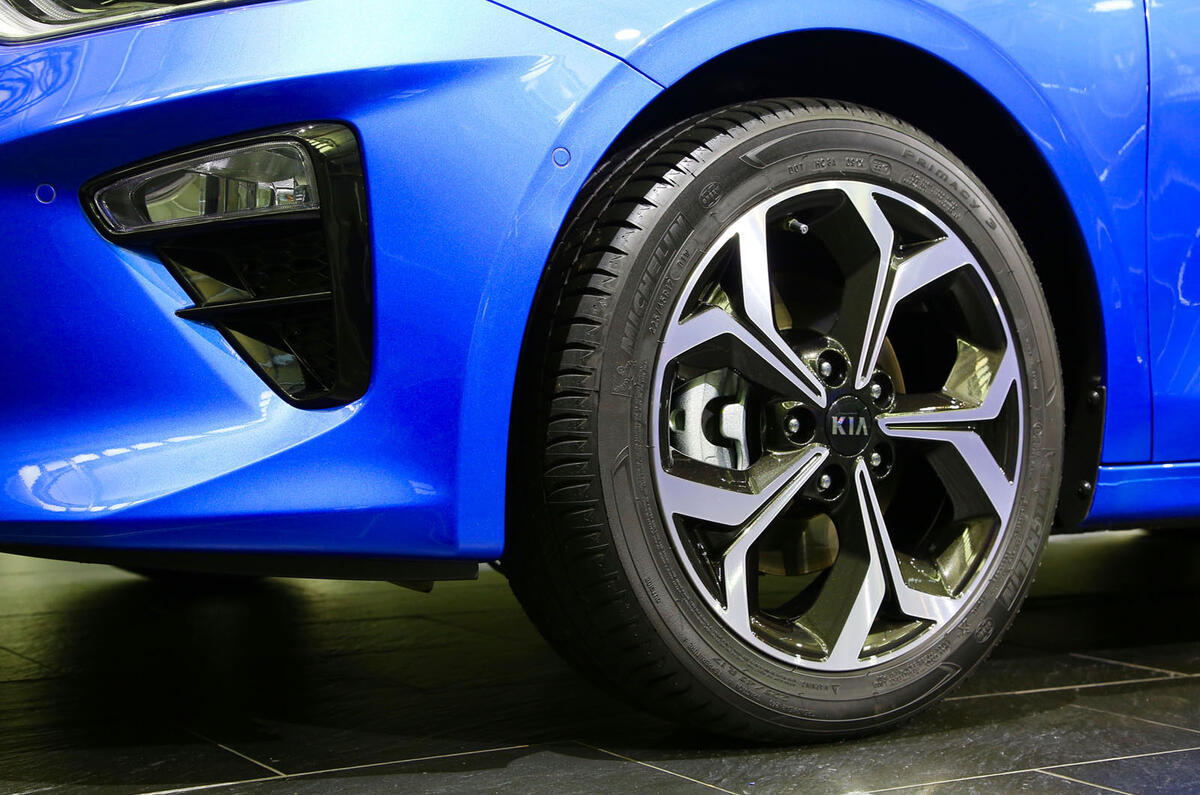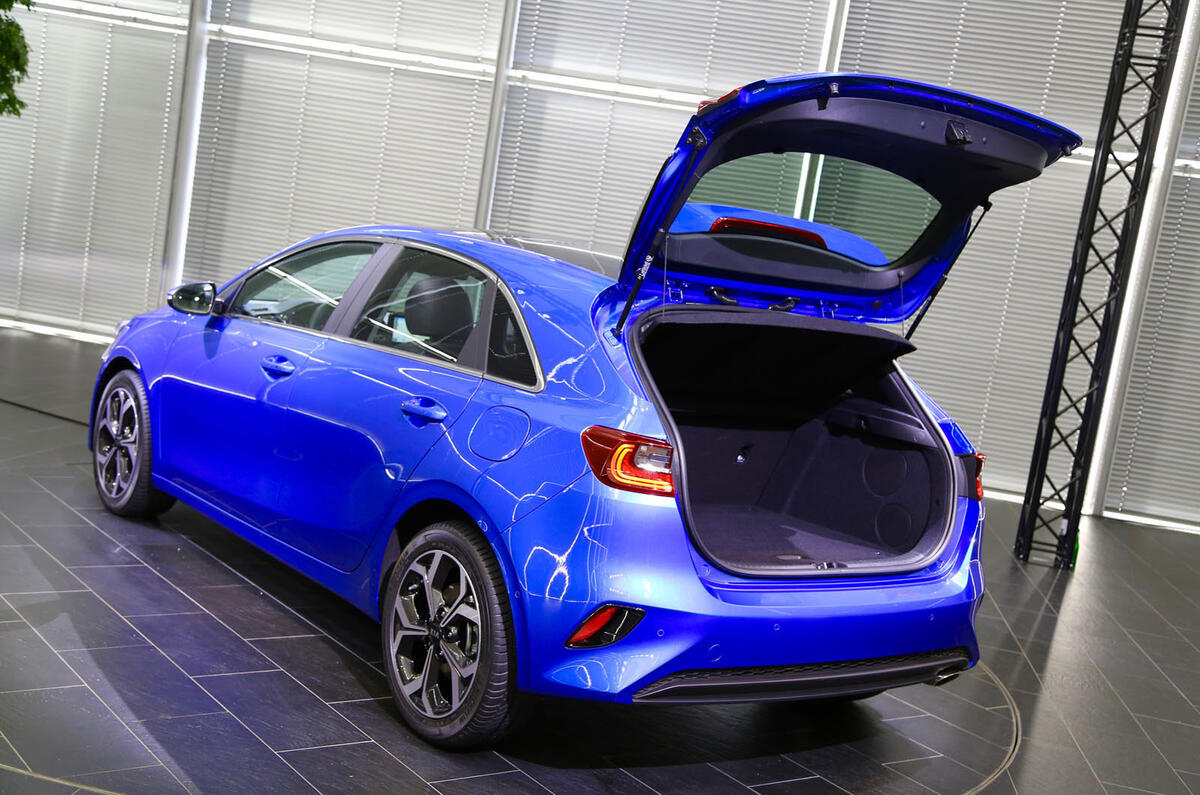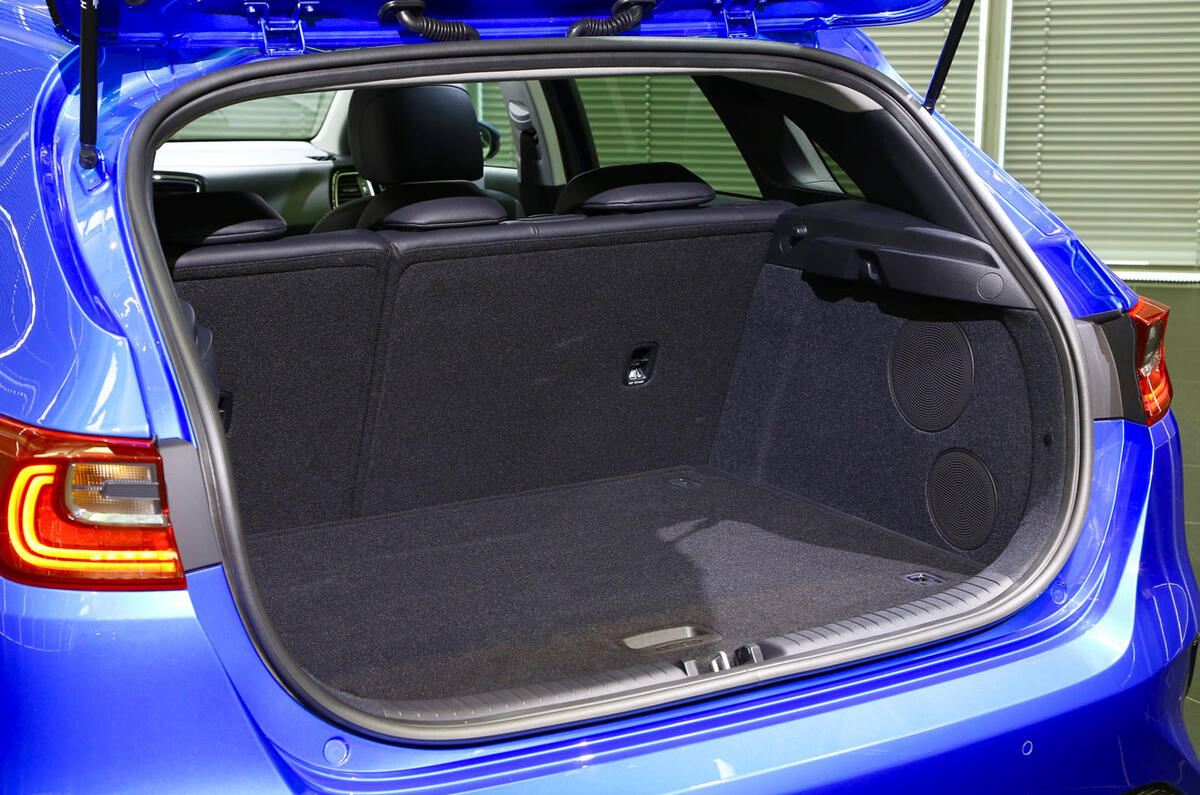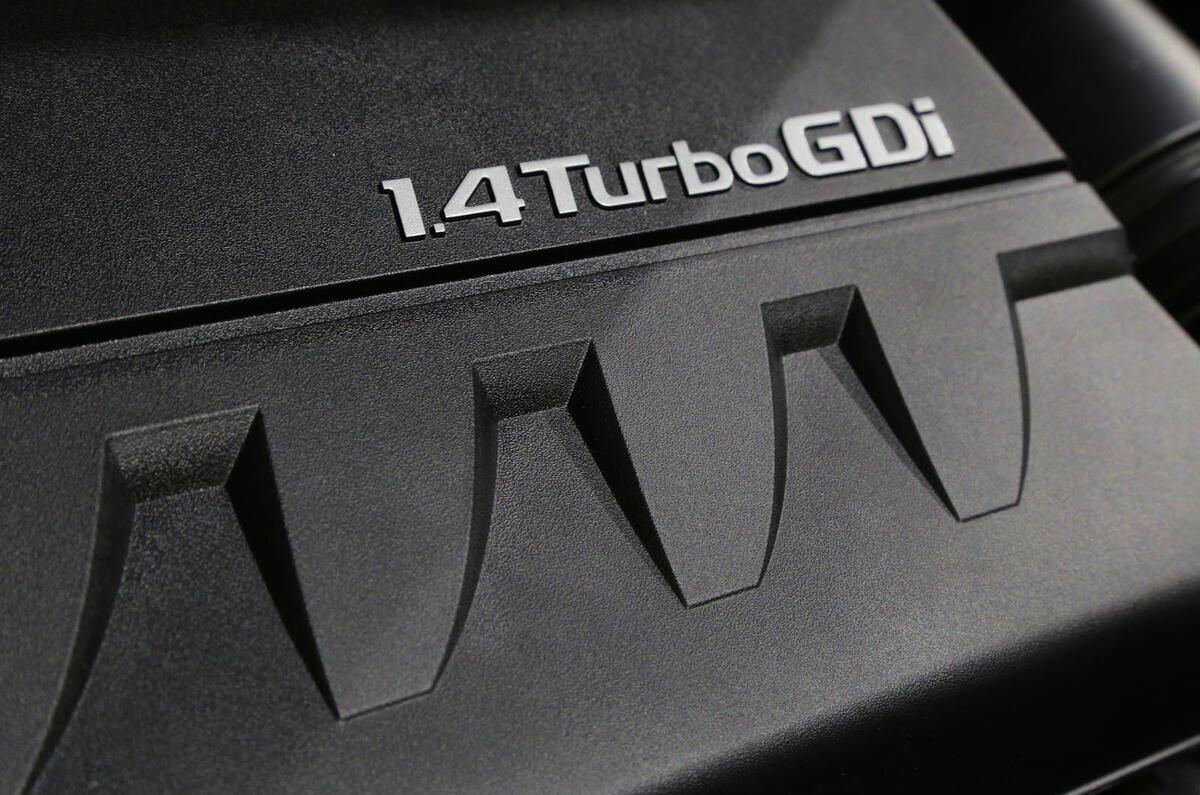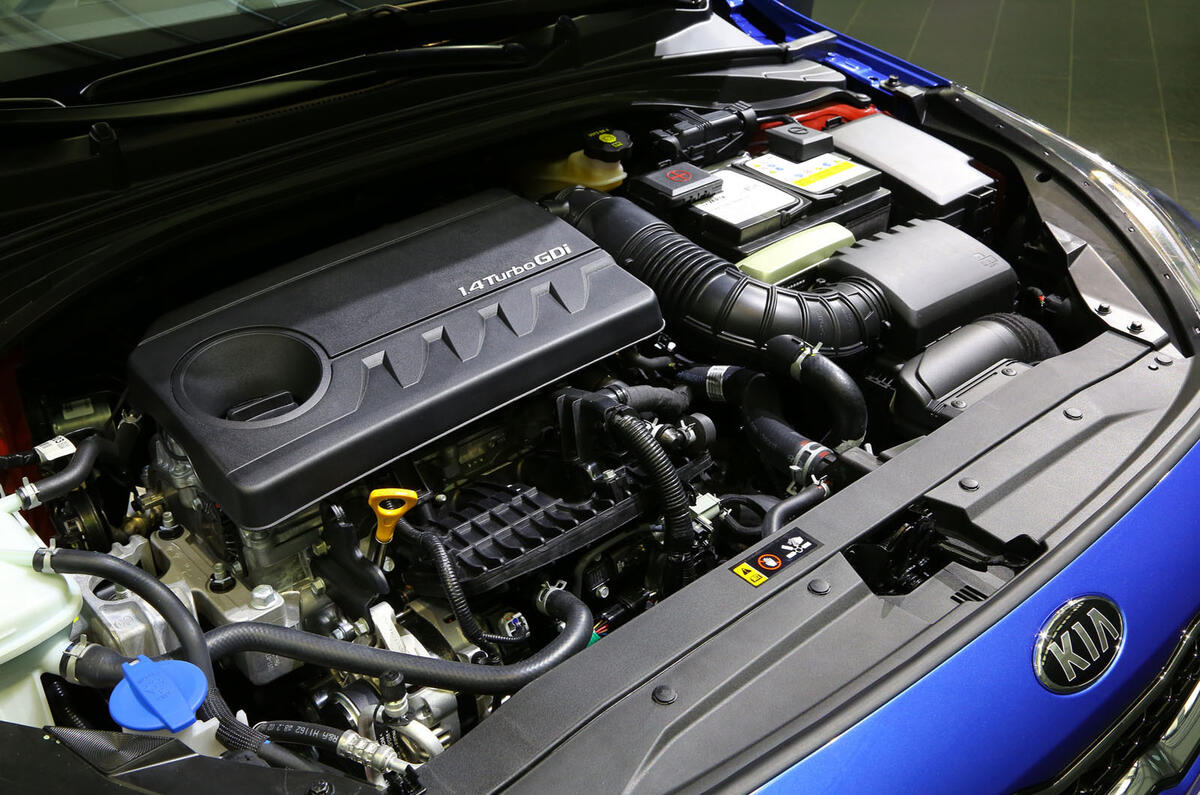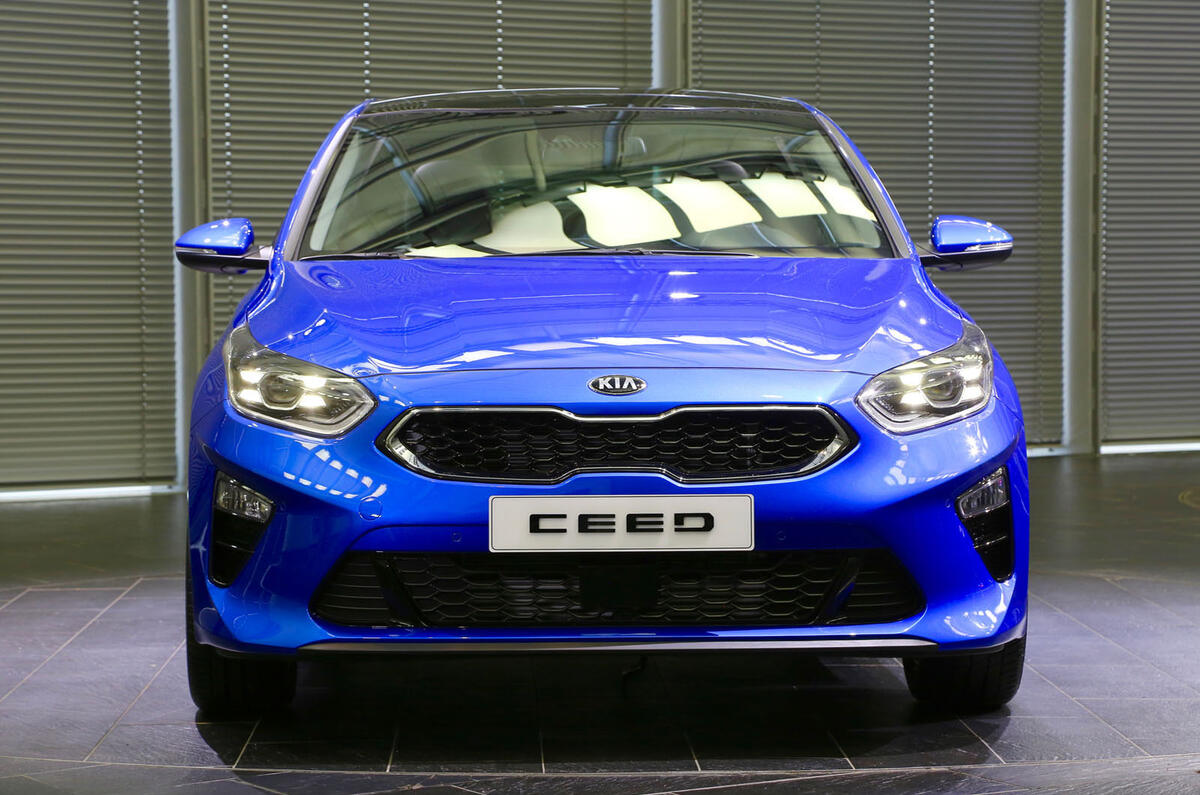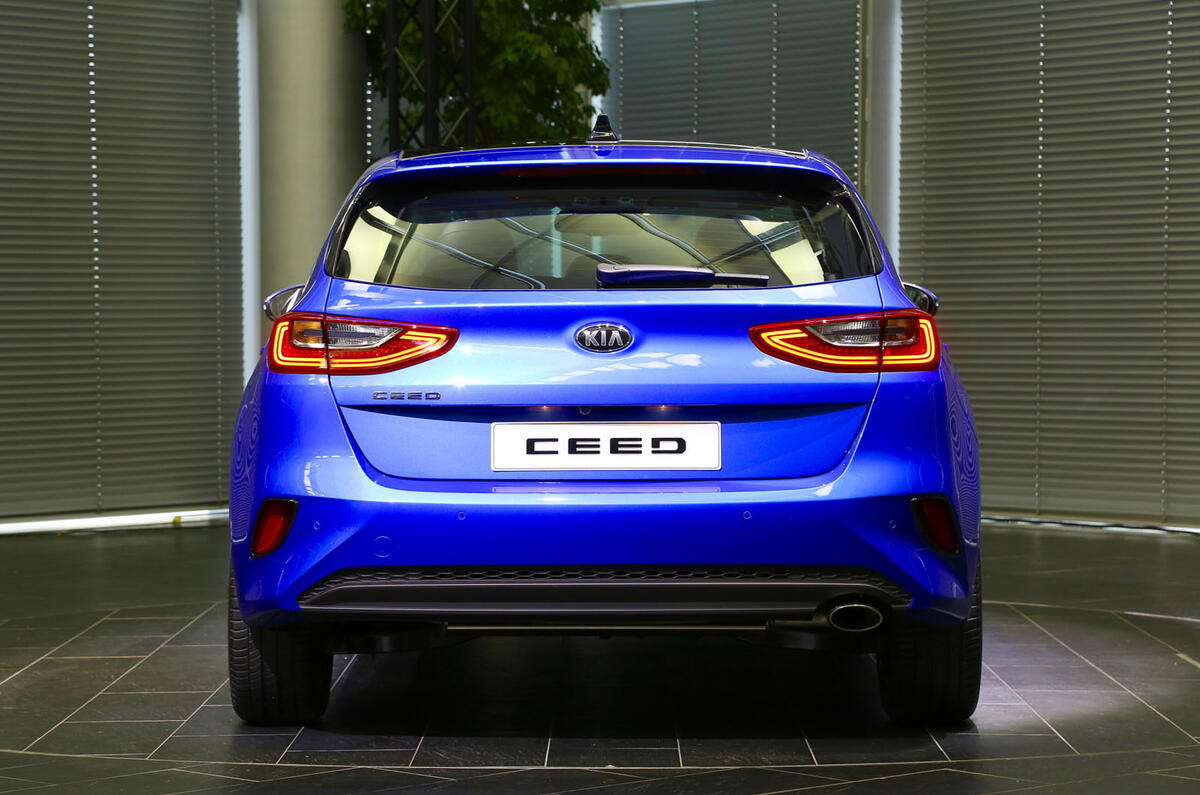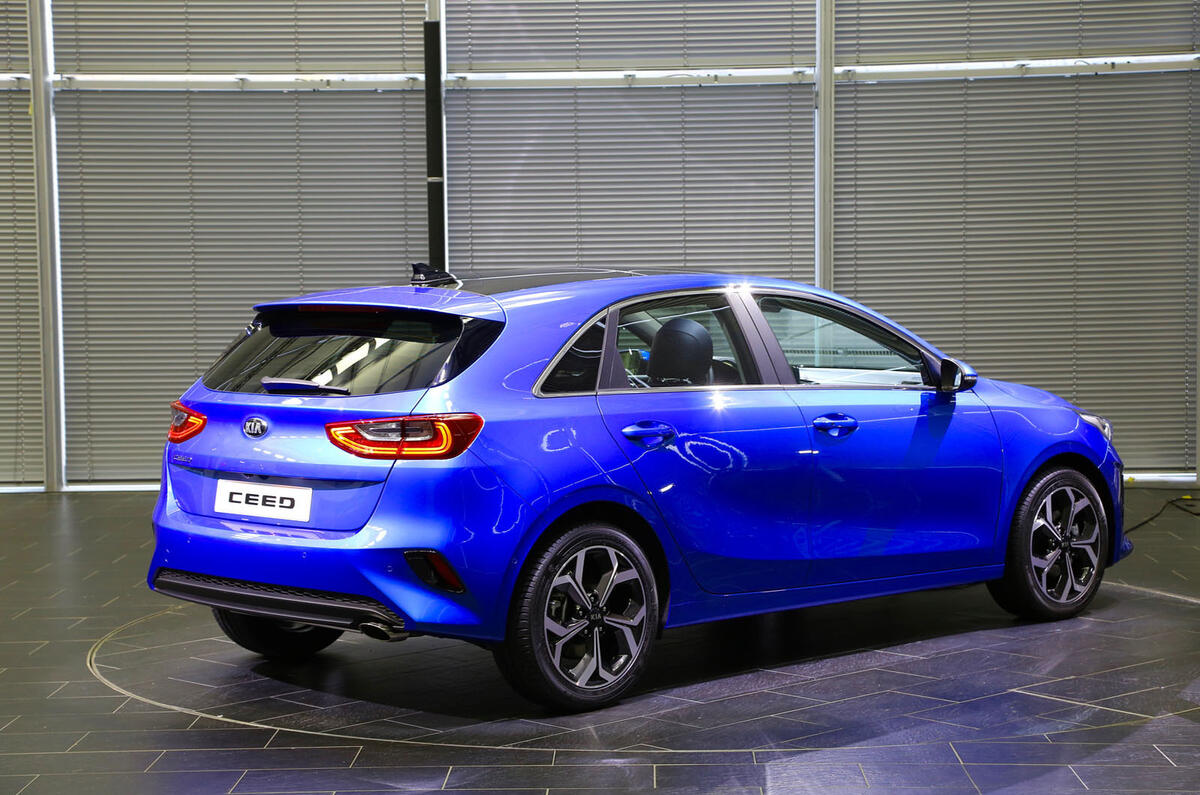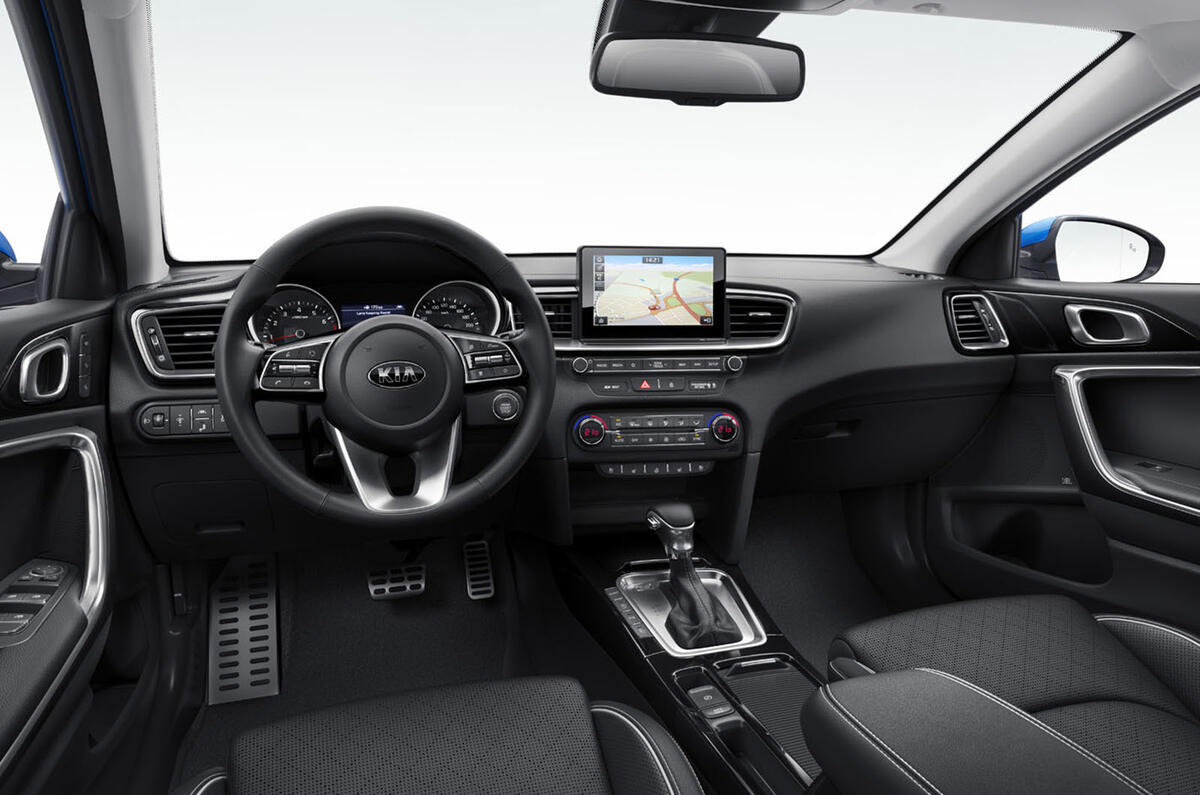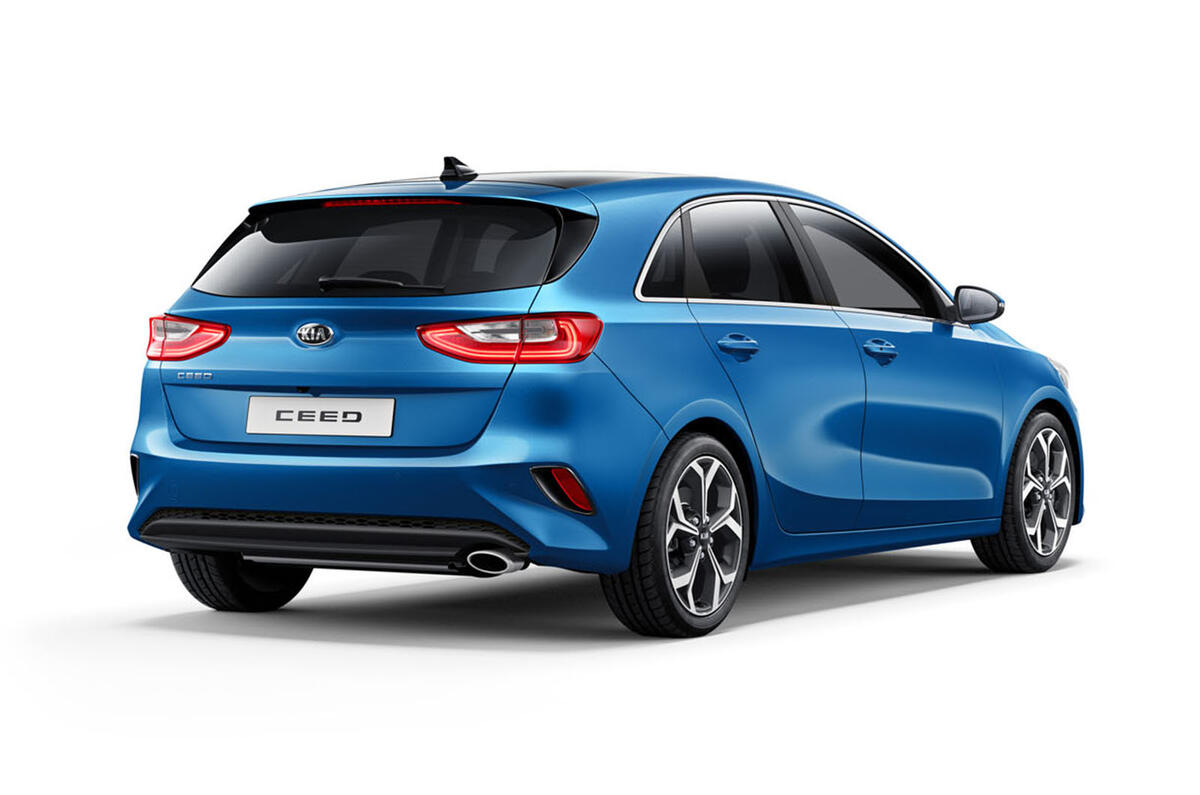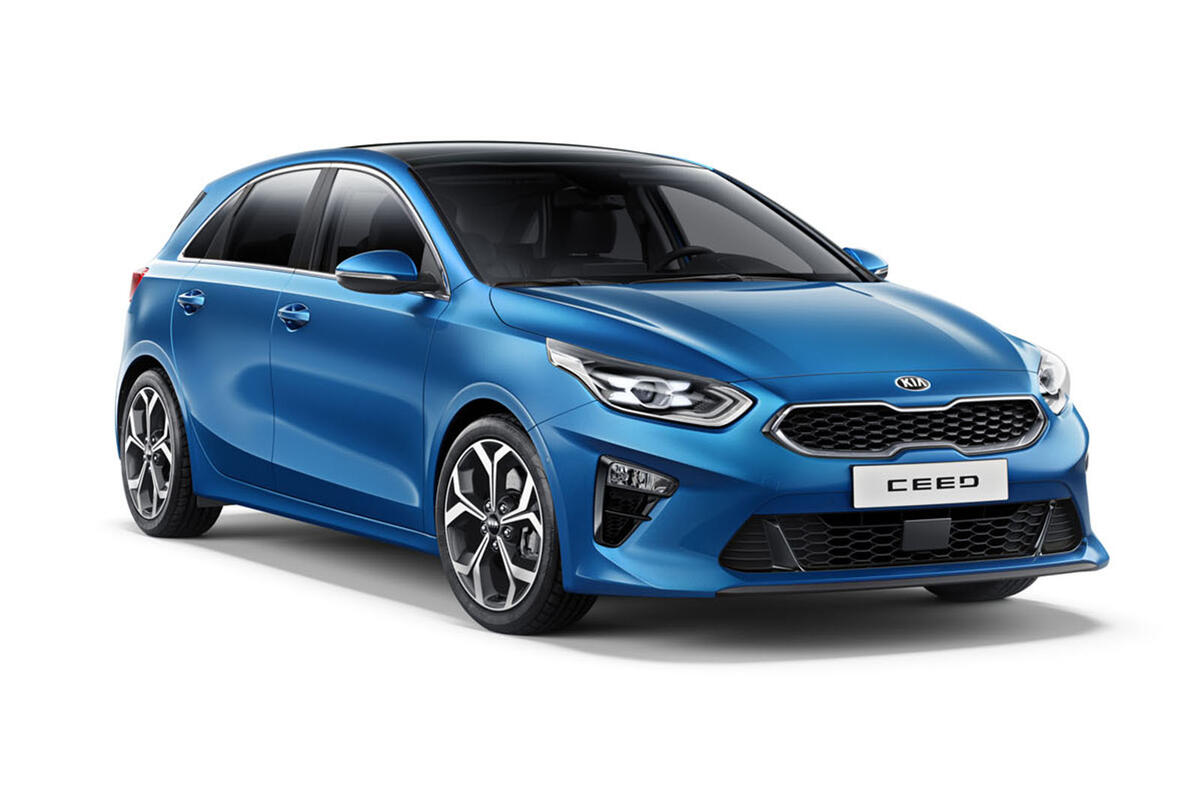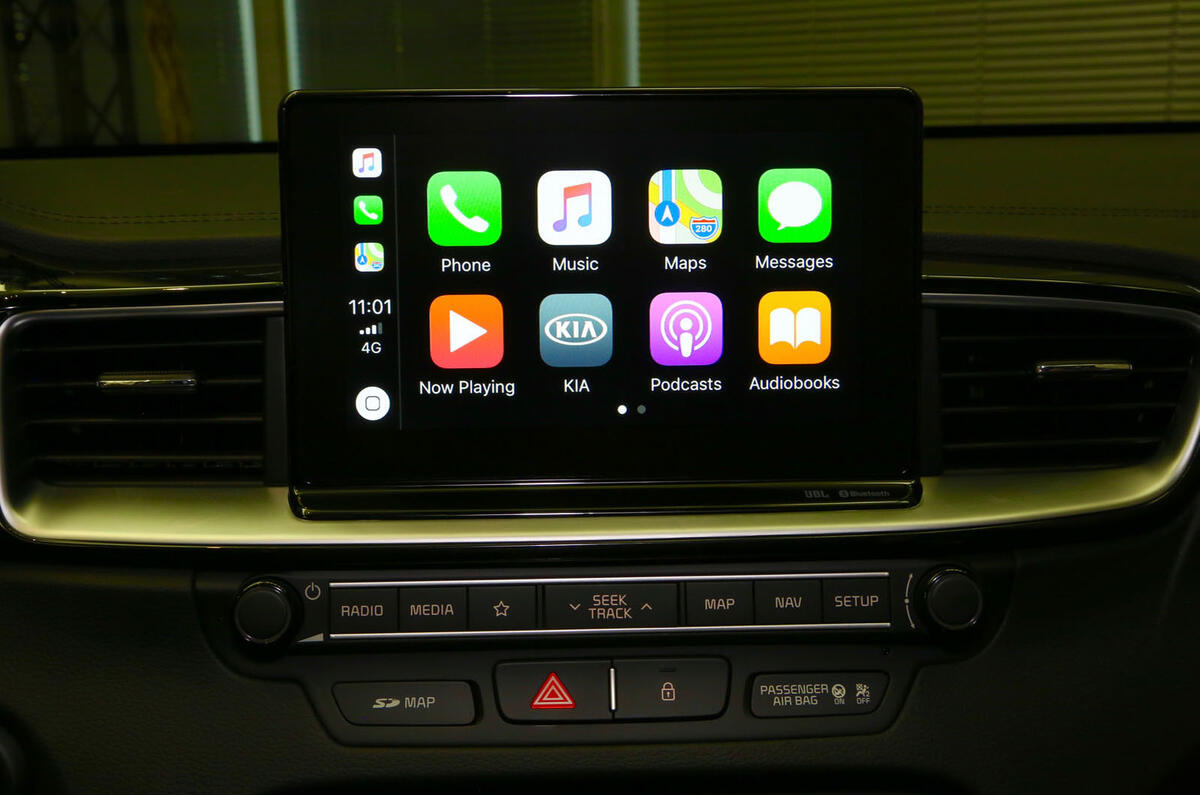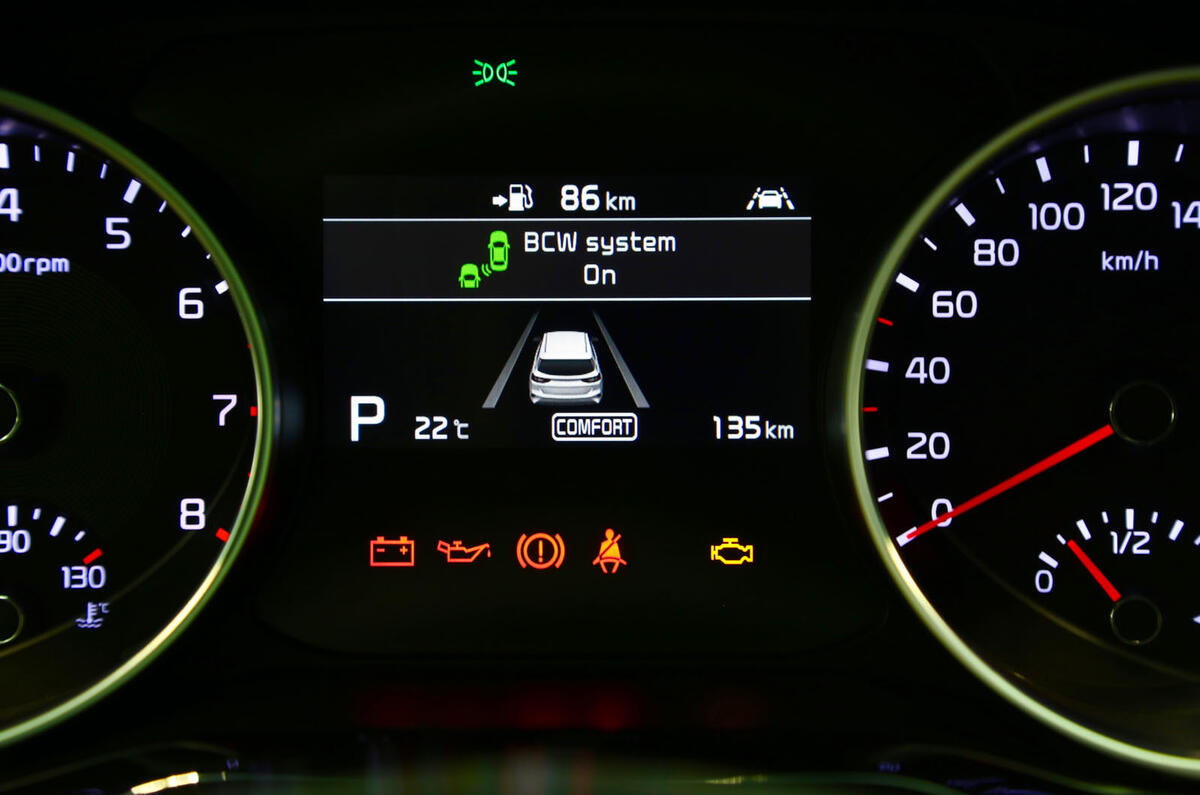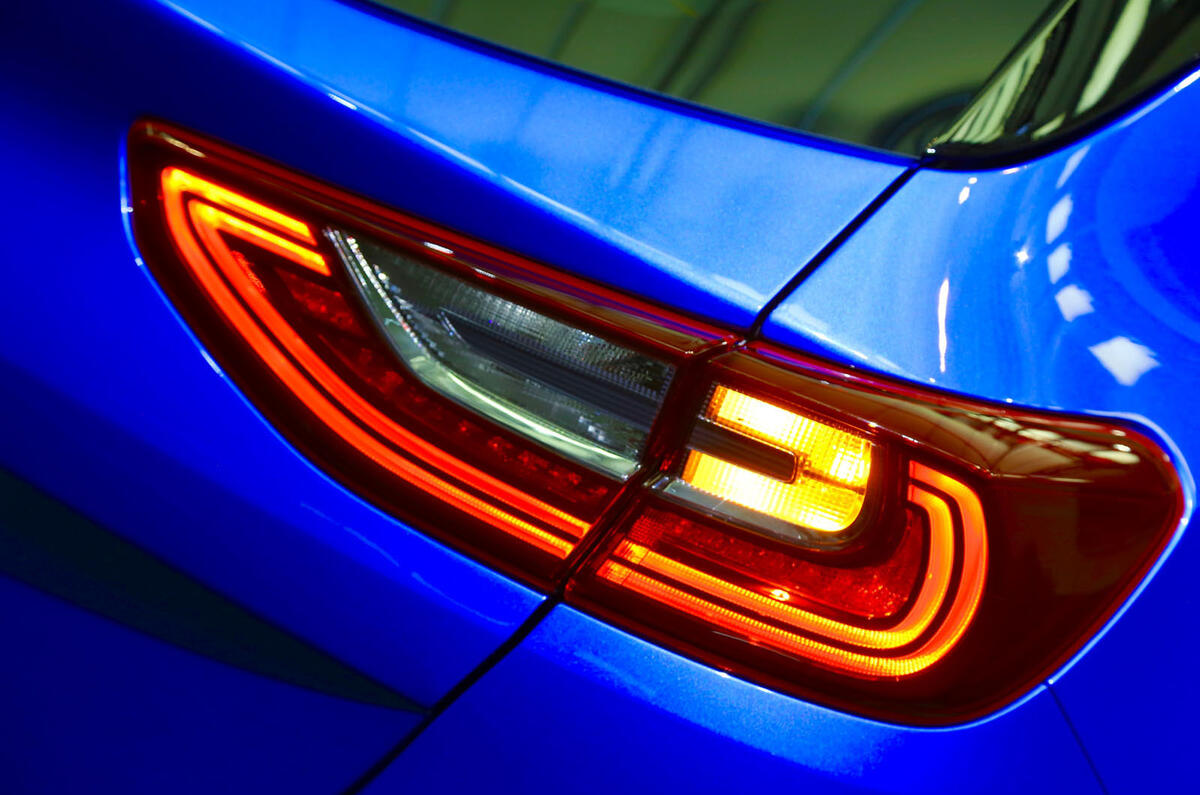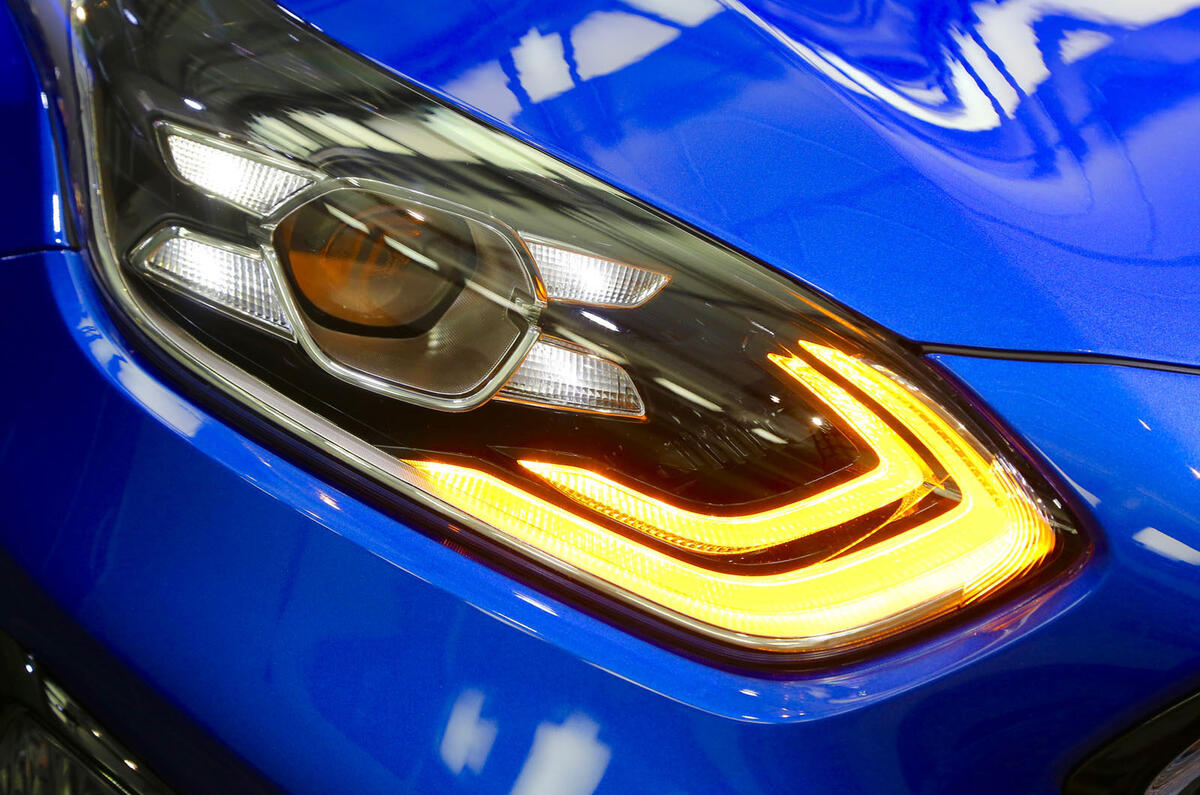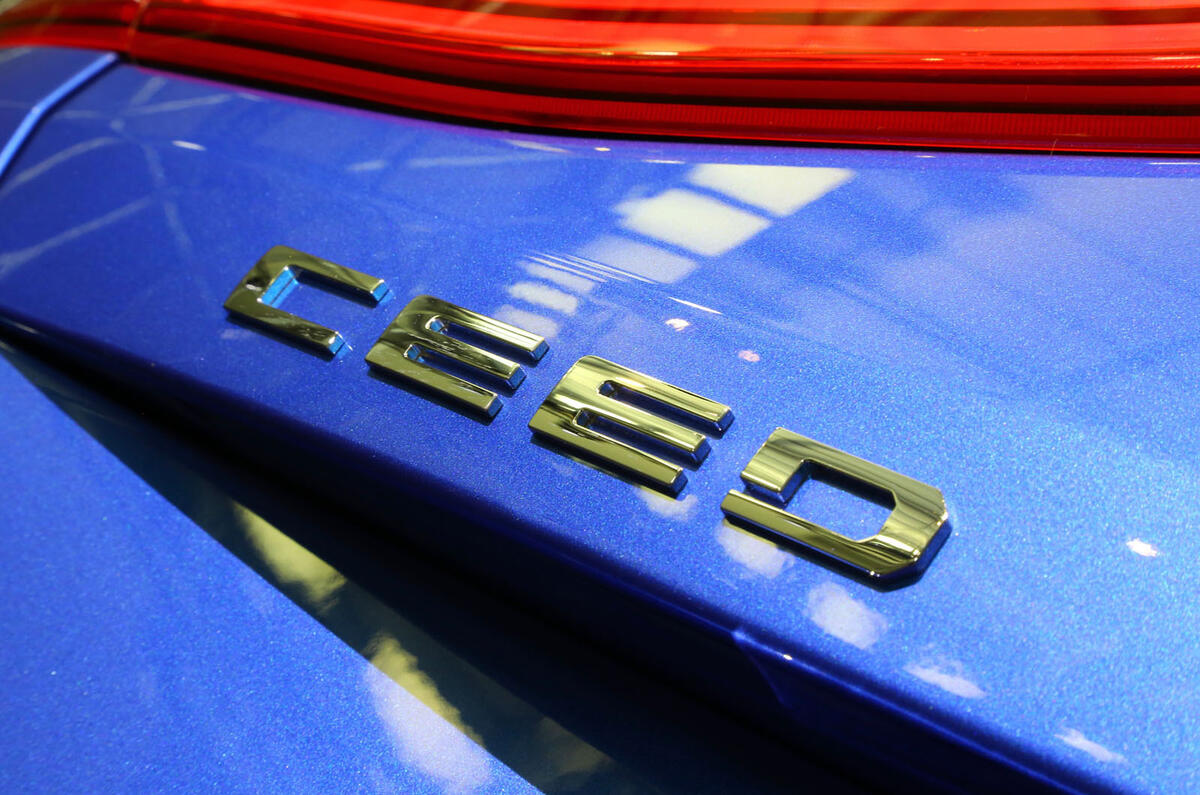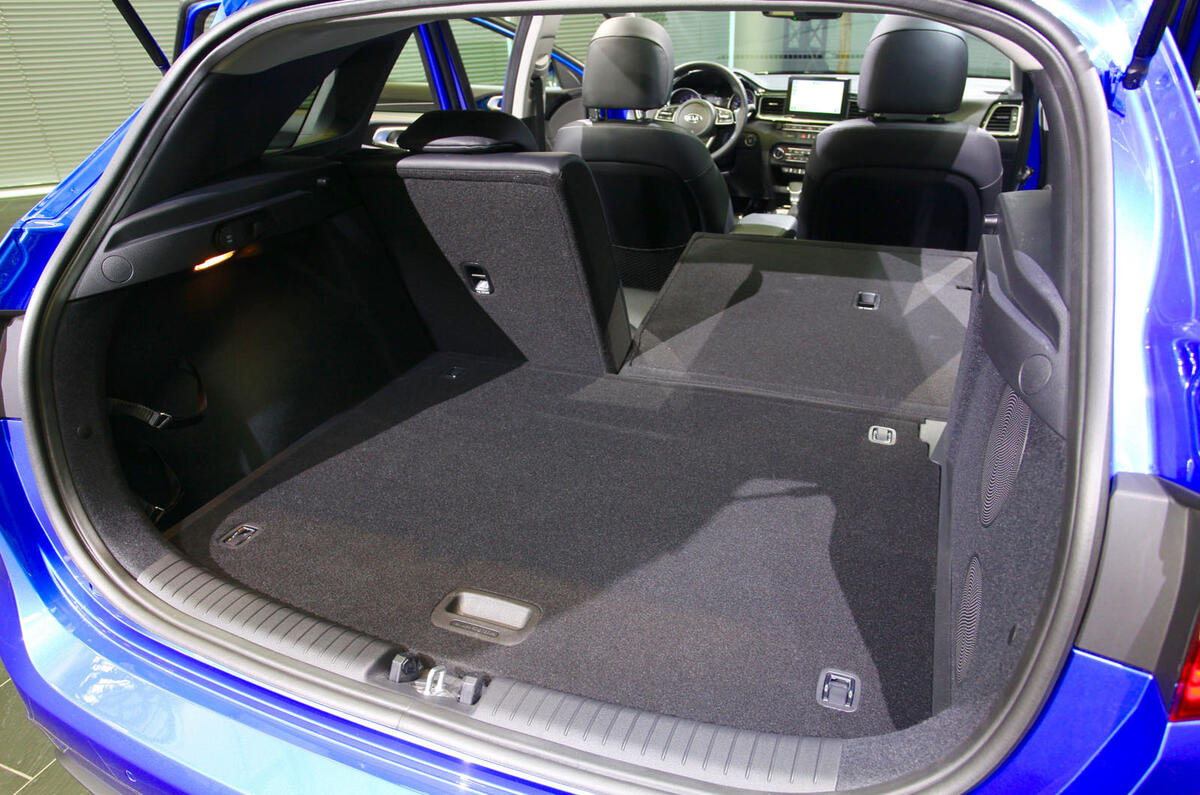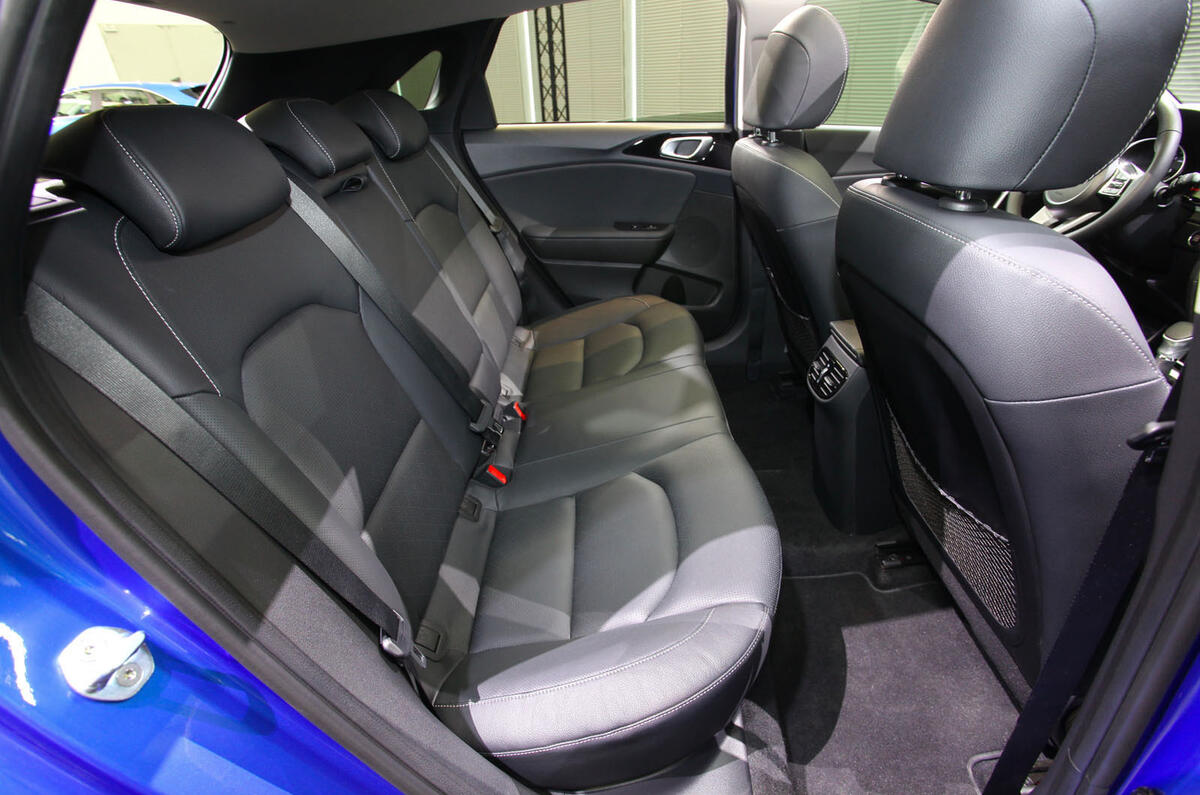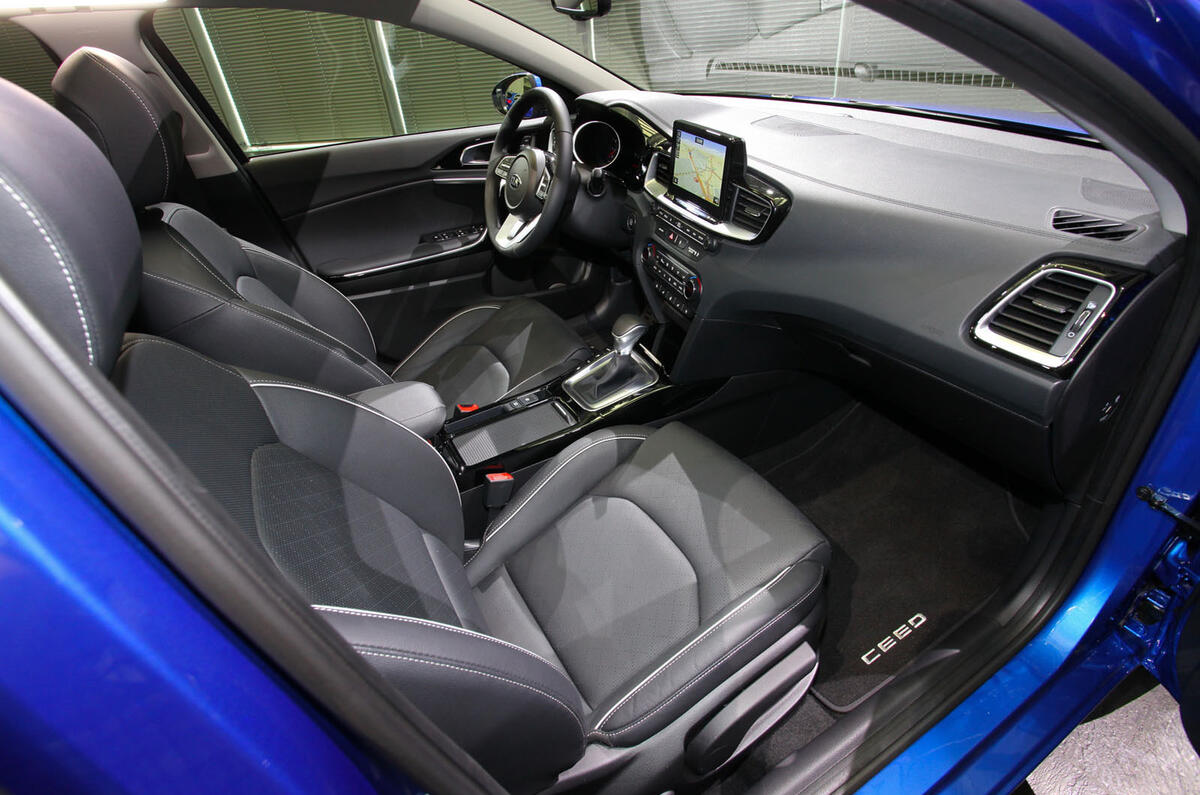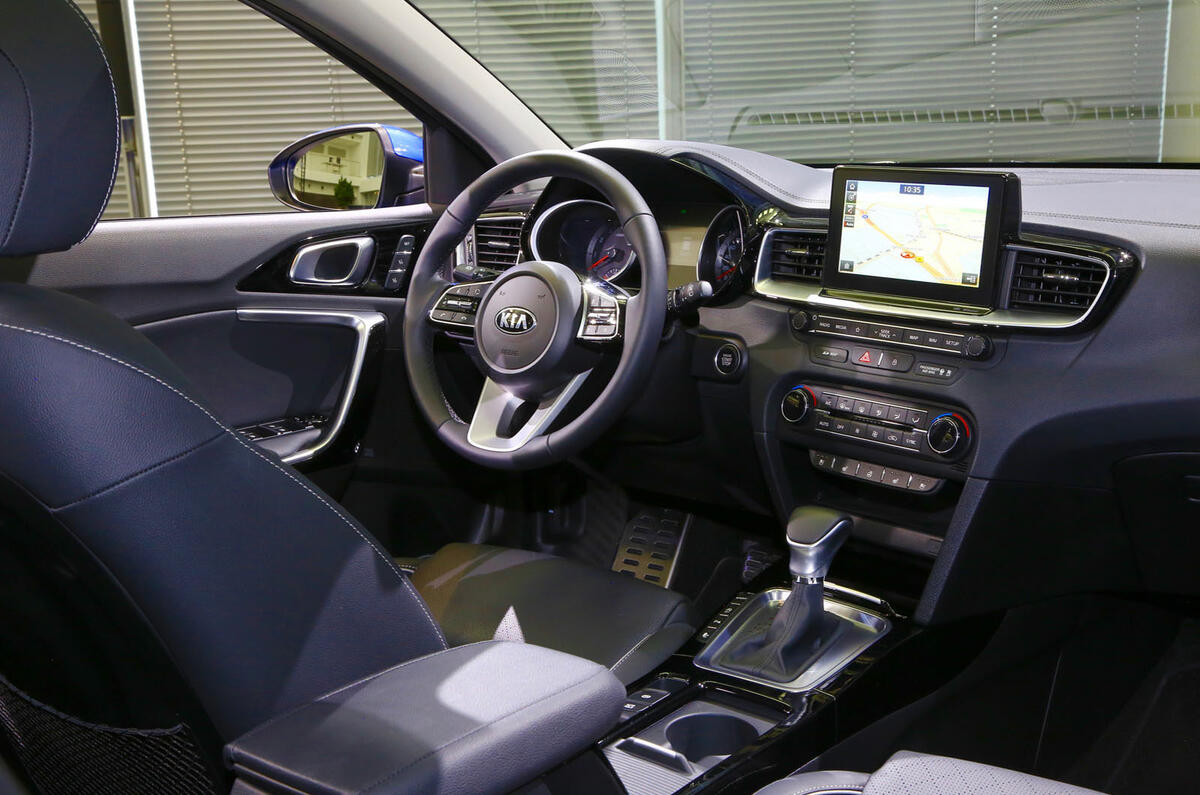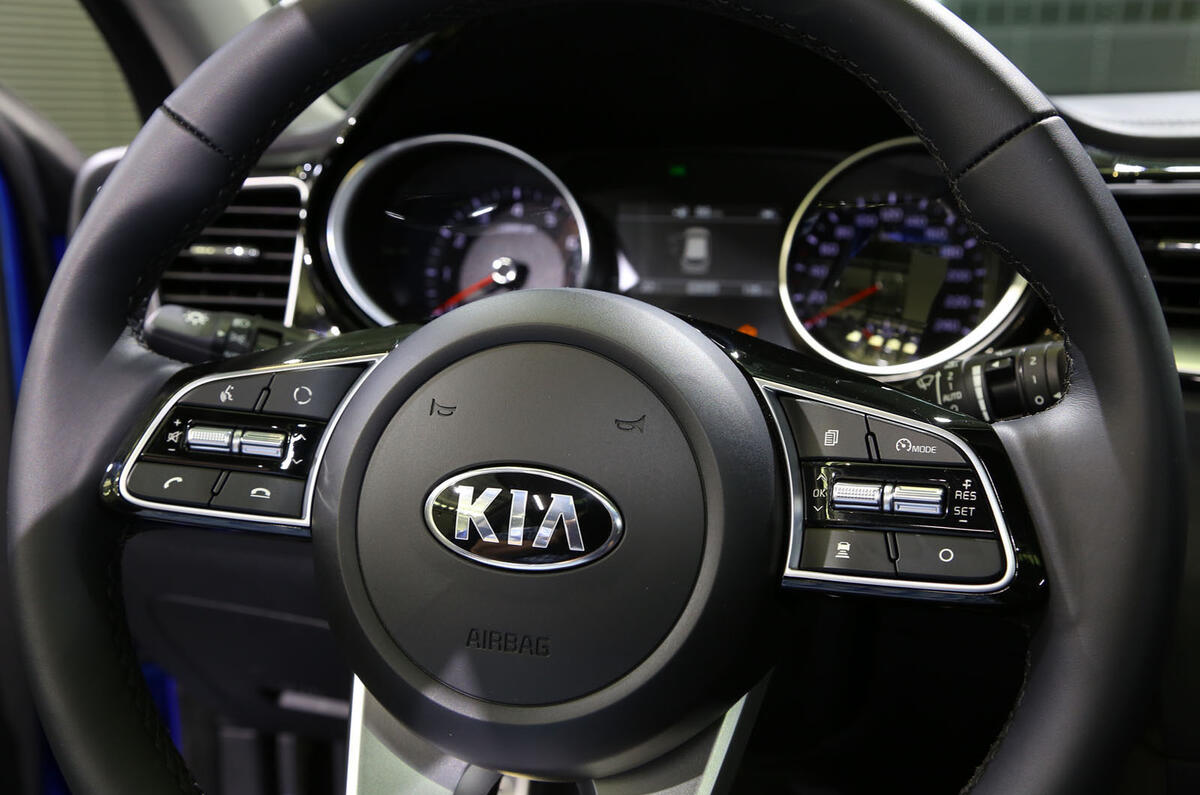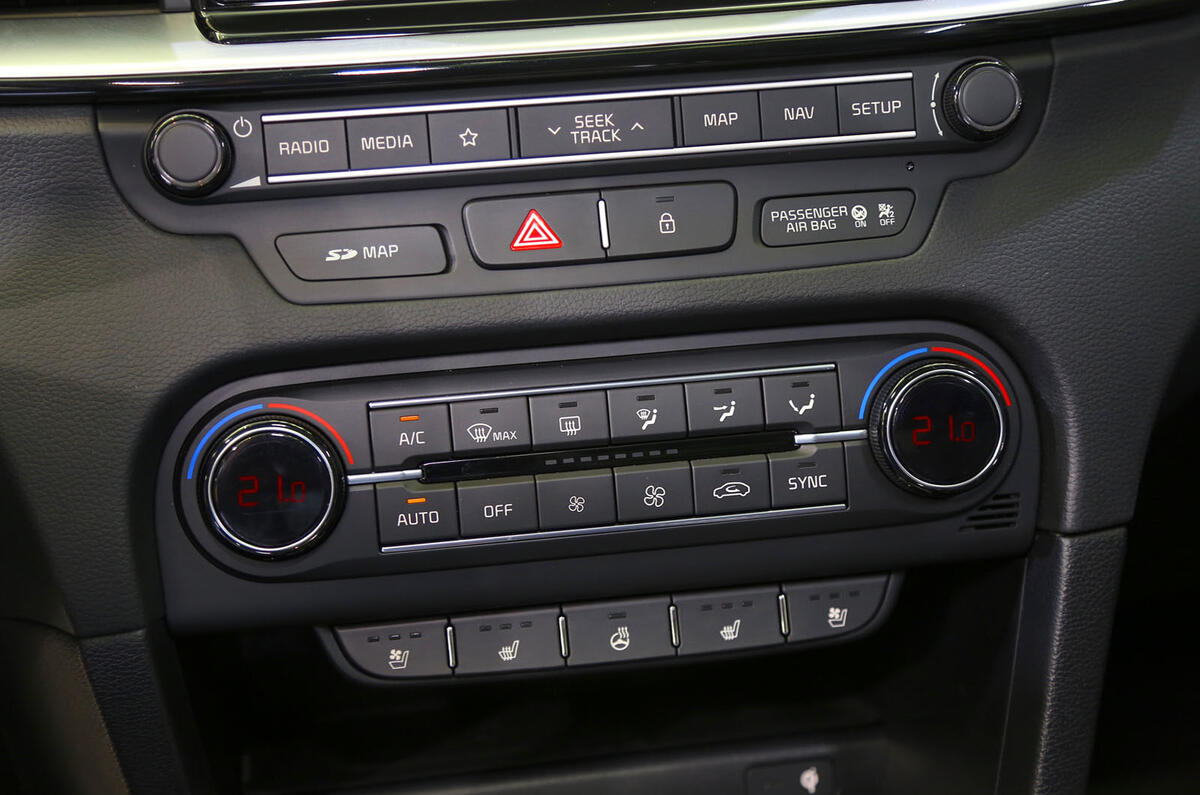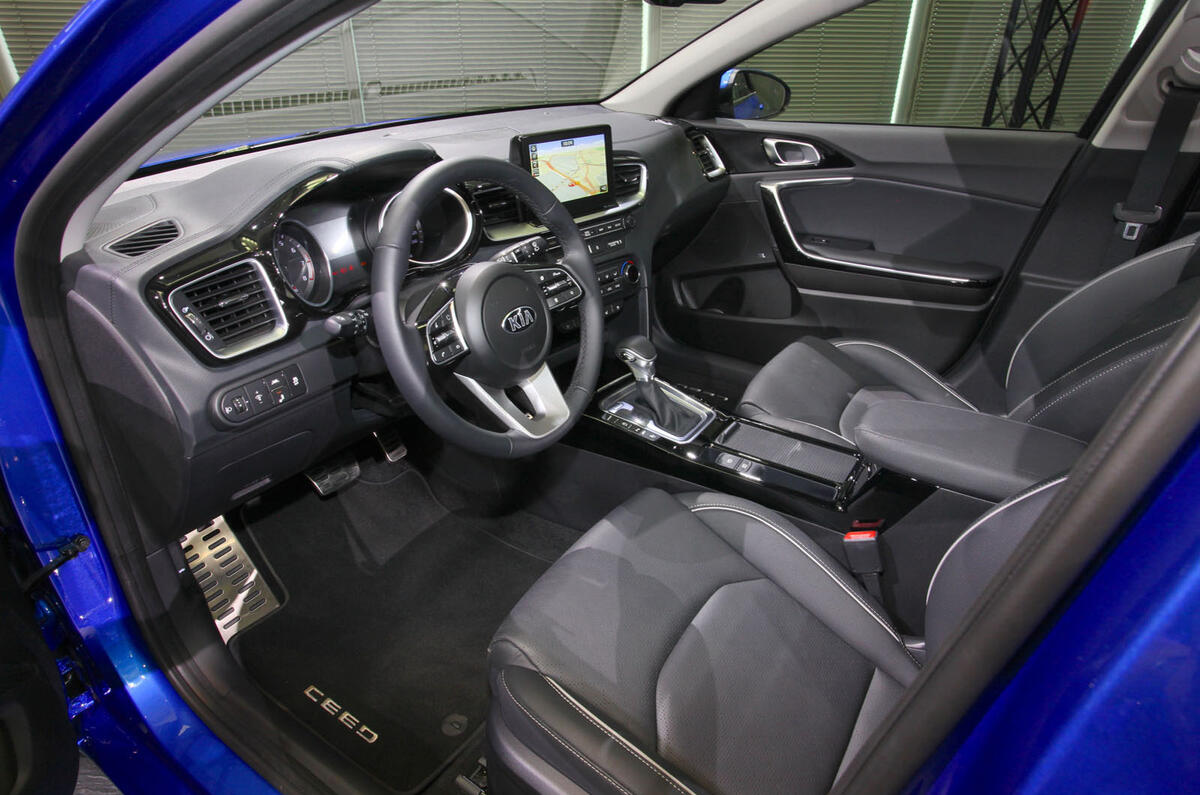Kia is taking a direct aim at the Volkswagen Golf with the new Ceed, which it claims will be the most high-tech car in its class. UK sales commence in August for the £18,295 hatch.
This new price is a £2930 increase over the outgoing Ceed's £15,365 starting figure, although Kia claims a boost in material quality and packaging for the new model. The increased price puts the entry-level Ceed £510 ahead of the Volkswagen Golf and £1295 ahead of the Hyundai i30, but £340 cheaper than the Honda Civic. Full UK specs are yet to be revealed.
First shown at the Geneva motor show, the five-door hatchback is the first from a new family of Ceed models that also includes the just unveiled Sportswagen estate and a shooting brake that's due in 2019. Beyond that, an SUV is due to complete the line-up.
Although now outsold by the Sportage and Sorento SUVs in Britain, the Ceed remains a key contributor to Kia’s growing European market share, which last year reached 3% - a level that has doubled since the first Ceed launched in 2006. This year, Kia is aiming to surpass 500,000 car sales in Europe for the first time.
Talking at the new model's reveal in Munich, European marketing boss Artur Martins told Autocar that the Ceed can hold its own in a market gradually shifting towards SUVs. He said that the Ceed “will continue to grow” in demand at the same time as new Kia SUV models, such as the Stonic, “reach new customers”. He said the Ceed ""attracts a different sort of buyer" to its higher-riding siblings.
The new five-door has been given a more mature look with straighter lines and less clutter than its predecessor. At the back, oval tail-lights share some lines with those fitted to Kia's top model, the Stinger, while the car’s new LED day running lights mimic those fitted to higher-spec GT models. The Ceed comes with wheels of 15in, 16in or 17in in diameter – the latter of which are the two-tone diamond-cut aluminium ones pictured here.

Built on Kia’s latest K2 platform and developed at the brand’s European base in Frankfurt, the latest model offers improved interior space and a 15-litre increase in boot capacity (at 395 litres), as a result of tighter packaging and a 20mm wider footprint than its predecessor. The new Ceed also promises to be more agile, thanks to the platform's lower centre of gravity, with the car 23mm shorter and sitting on fully independent suspension that’s been honed on European roads, including some tuning in Britain.
Albert Biermann, the boss of vehicle testing at Kia's parent company Hyundai Motor Group and the man behind the new Hyundai i30N hot hatch, said to "expect a good step up for driving fun, precision, agility and so on compared with the previous Ceed" during a conversation with Autocar late last year.
Power for the new Ceed comes from a choice of two petrol engines and one diesel, which are shared with the model's twin from sister brand Hyundai, the i30. The smallest petrol is an updated version of a 1.0-litre T-GDi unit that produces 118bhp, while a 1.4-litre T-GDi engine replaces the old car’s 1.6 petrol and comes in 99bhp and 138bhp forms. Just one 1.6-litre diesel CRDi is offered but it's new and comes in 113bhp and 134bhp guises. Kia expects the cleanest version of the oil-burner to produce less than 110g/km of CO2, thanks to a new selective catalytic reduction system.
Drive is sent to the front wheels via a six-speed manual as standard, with a seven-speed dual-clutch gearbox available as an option on the 1.4 petrol and 1.6 diesel.
A 48v mild hybrid version will be added to the range next year – the same year Ford introduces a 48v mild hybrid version of its rival, the Focus – while Martins told Autocar that a plug-in hybrid version is “under consideration”. Martins said a fully electric version is also possible but unlikely because the K2 platform would need modifying, which could “impact interior space”.
Two drive modes, Normal and Sport, are available via the Ceed’s Drive Mode Select system. The former maximises fuel efficiency, while the latter sharpens throttle response and adds weight to the steering. An optional Eco pack adds an active air flap to the car’s front grille, which closes to reduce drag and opens to enhance engine cooling. The pack also includes an underbody cover and lowered suspension to smooth airflow beneath the car, as well as lower rolling resistance Michelin tyres.

Inside, the car comes with a new infotainment display of 5.0in or 7.0in in size, depending on the specification, or an 8.0in touchscreen with Apple CarPlay and Android Auto in top models. The Ceed gets Bluetooth smartphone integration, automatic lights and keyless entry as standard, while buyers are offered options such as a JBL premium sound system, wireless phone charger and heated windscreen.
The Ceed has a new Level 2 autonomous system called Lane Following Assist, which can take control of the car’s steering, throttle and brakes in traffic and even suggest the changing of lanes to maintain progress in heavy congestion. Also available is adaptive cruise control that can bring the car to a stop, blindspot and rear cross-traffic warning, as well as a parking assist function and pedestrian recognition technology that works with the car's forward collision avoidance technology.
The car will enter production in May in left-hand-drive form, with right-hand-drive cars following later in the summer ahead of first deliveries in the autumn. The estate will mirror the hatchback's launch and production schedule but the shooting brake, which will be inspired by the striking Proceed concept of 2017, isn’t expected to arrive on roads until early next year, following its anticipated reveal in the second half of 2018. That car will also likely be the most expensive.
Kia has dropped the apostrophe in car's name (the previous model was called Cee'd) to emphasise its European focus. Kia said the letters in the name stand for ‘car of Europe, with European design’. The model is only sold in Europe; it has surpassed 1.28 million units through two previous generations.
Read more
